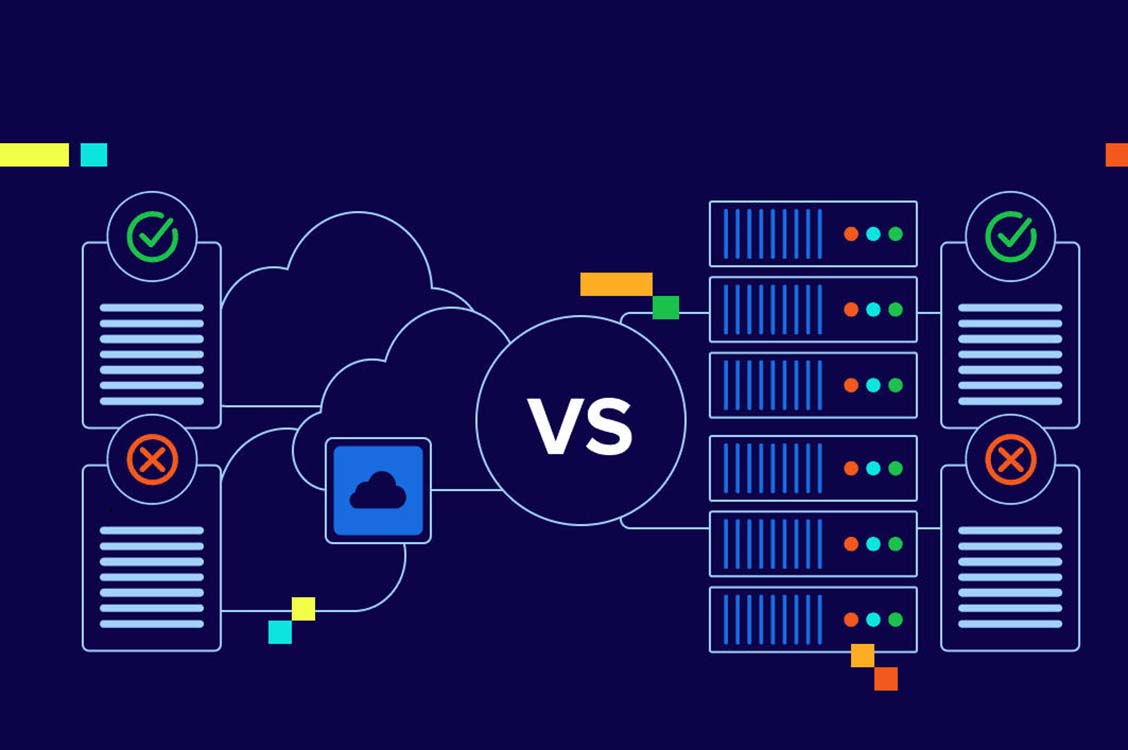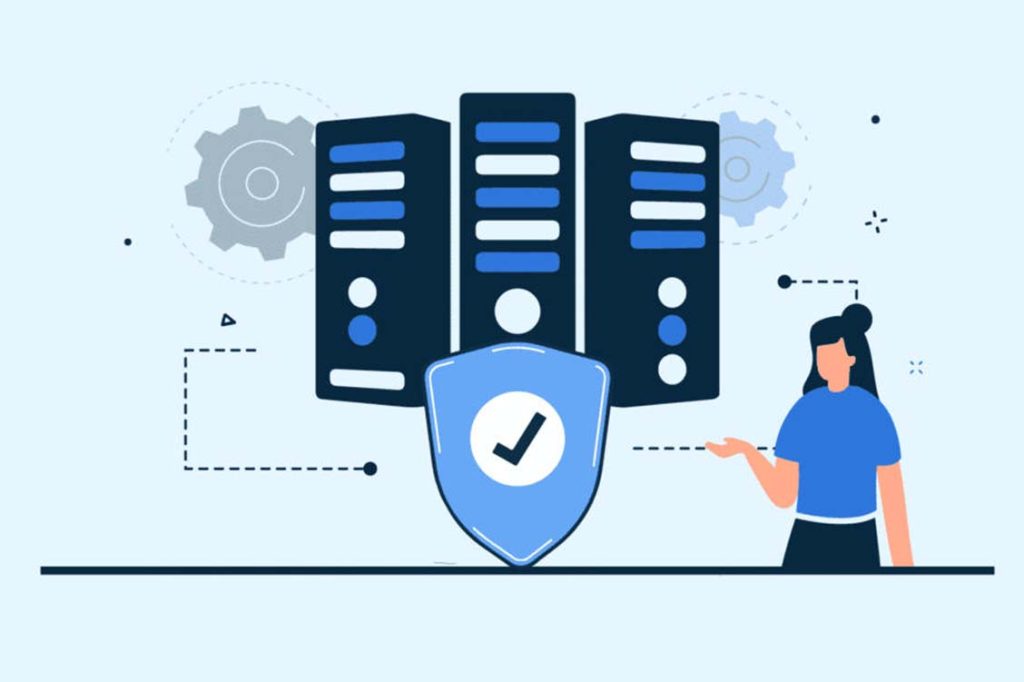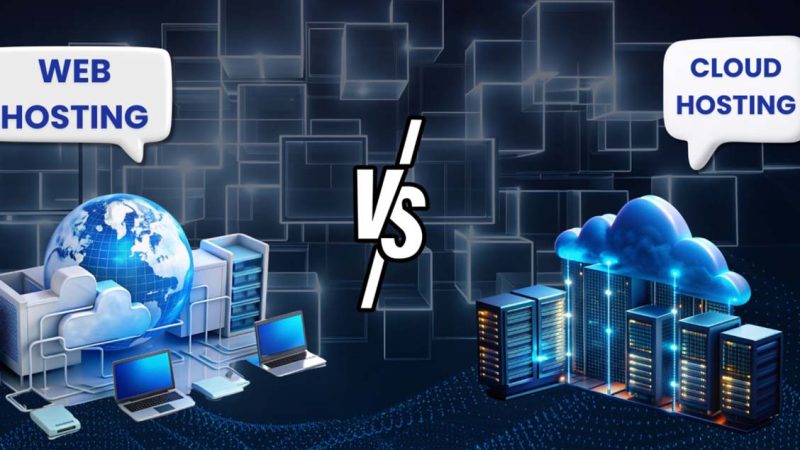Cloud VPS vs. Traditional VPS: The Ultimate Showdown of Elasticity, Cost, and Performance

In the wave of digitalization, the Virtual Private Server (VPS) has become the cornerstone for countless businesses, developers, and individual webmasters to build their online operations. It perfectly balances the economy of shared hosting with the control of a dedicated server, becoming synonymous with “cost-effectiveness” in the tech world. However, with the rapid development of cloud computing technology, a critical choice is placed before us: should we choose the time-tested Traditional VPS, or embrace the future represented by Cloud VPS?
This showdown is far more than a debate over technical terms; it concerns the agility of your business, the precision of your budget, and the resilience of your system under pressure. It is like choosing a home for your digital assets: a Traditional VPS is like buying a permanently owned apartment on stable land, while a Cloud VPS is like renting a unit in a fully-equipped, on-demand scalable modern smart community. Both can provide shelter from the wind and rain, but their flexibility, maintenance costs, and expansion potential are vastly different.
The Difference in Foundation – The Essential Disparity in Architectural Philosophy and Resource Allocation
To understand the showdown between the two, one must start with their underlying architecture. This determines the root of all their behavioral patterns.
1.1 Traditional VPS: The “Partitioning” Model of Physical Servers
Traditional VPS, sometimes referred to as “Managed VPS” or “Container-based VPS,” has a core idea of partitioning a single physical server.
- Technical Implementation: Typically based on containerization technologies like OpenVZ, Virtuozzo, or LXC, or hardware virtualization technologies like KVM, Xen. In containerization technologies, all VPS instances share the same host operating system kernel; in hardware virtualization, each VPS can have its own independent kernel.
- Resource Allocation Model: This is like dividing a powerful physical server into multiple independent “rooms” (VPS). Providers usually set a fixed resource quota for each “room,” for example, 2 CPU cores, 4GB RAM, 100GB SSD storage. This allocation is often static.
- Key Limitation: The “Noisy Neighbor” Problem. Due to shared resources, when another VPS instance on the same physical server suddenly consumes a large amount of CPU or I/O resources, it may affect your VPS’s performance. This is like your neighbor having a loud party late at night disturbing your rest. Although advanced hardware virtualization technologies (like KVM) offer better isolation, the risk of resource contention still exists.
1.2 Cloud VPS: The “On-Demand” Model of Distributed Resource Pools
Cloud VPS is a product of the cloud computing era, built upon a vast, abstract resource pool.
- Technical Implementation: It runs on mature cloud operating systems like VMware vSphere, OpenStack, Proxmox VE, or major public clouds (like AWS EC2, DigitalOcean Droplets). These systems integrate the computing, storage, and networking resources of hundreds or thousands of physical servers in a data center into a unified, flexibly schedulable resource pool.
- Resource Allocation Model: Cloud VPS draws resources from this vast pool. Its core characteristic is elasticity. You get a baseline configuration, but most cloud providers allow you to vertically scale (upgrade/downgrade configuration) or horizontally scale (increase/decrease instance count) within minutes.
- Core Advantage: Inherent High Availability. Freed from the constraints of a single physical server, many Cloud VPS platforms can provide advanced features, such as automatically performing Live Migration of your VPS instance to another healthy host in the cluster when the underlying hardware fails, achieving near-zero downtime.
Traditional VPS is about “dividing and ruling territory,” with clear resource boundaries but potential neighborly influence; Cloud VPS is about “drawing from the cloud,” with blurred resource boundaries but possessing nearly limitless expansion potential and greater resilience.
The Core Battlefield – A Head-On Confrontation of Elasticity, Agility, and Scalability

This is the most disruptive advantage of Cloud VPS and the most fundamental difference between the two.
2.1 Vertical Scaling: Two Postures for Handling Traffic Peaks
- Scenario: Your e-commerce website is about to start a “Black Friday” sale, with traffic expected to be 10 times the usual volume.
- Traditional VPS Response: You must estimate the peak traffic in advance and submit a ticket to the provider to apply for a higher-spec VPS. Then, you need to go through: waiting for customer support response -> configuring the new server -> migrating data and applications -> testing -> changing DNS records (which can cause hours of downtime). The entire process is cumbersome, time-consuming, and after the promotion ends, you need to reverse the process, or you will continue paying for the high configuration.
- Cloud VPS Response: Through the cloud provider’s control panel or API, you can increase the CPU and RAM configuration from 2 cores 4GB to 8 cores 16GB in minutes. After the traffic peak, scale back down with one click. The entire process requires no data migration, no IP address change, and no service interruption. This “temporary upgrade” model, billed by the second or minute, brings cost control to the extreme.
2.2 Horizontal Scaling and High Availability Deployment
- Scenario: You need to build a high-availability architecture for a critical business application, ensuring a single node failure does not affect the overall service.
- Traditional VPS Limitations: Achieving high availability usually requires manually configuring load balancers and failover mechanisms between multiple independent VPSs. The architecture is complex, and due to the isolation between VPSs, managing and synchronizing data is more challenging.
- Cloud VPS Weapon: Cloud platforms natively support horizontal scaling. You can place Cloud VPS instances behind a load balancer and configure an auto-scaling group. When monitoring metrics show CPU utilization consistently exceeding 80%, the system automatically creates new, identical Cloud VPS instances to join the cluster; when traffic drops, it automatically removes excess instances. Simultaneously, combined with distributed storage and virtual networks, building a high-availability architecture becomes as simple as building blocks.
In the dimension of elasticity and agility, Cloud VPS wins by an overwhelming margin. It allows infrastructure to be quickly orchestrated and adjusted like software, perfectly meeting the needs of modern businesses for rapid iteration and coping with uncertainty.
The Cost Myth – The Game Between Actuaries and Fixed Expenditure
Cost is a key factor in decision-making, but the cost structures of Cloud VPS and Traditional VPS are fundamentally different.
3.1 Traditional VPS: A Simple and Transparent Fixed-Cost Model
Traditional VPS typically uses a fixed monthly or annual price. You pay a fixed fee and receive a fixed set of resources. The advantages of this model are:
- Simple Budgeting: Financial forecasting is very easy, with no surprise bills.
- Long-term Discounts: Prepaying for an annual fee usually results in significant discounts, effectively reducing the average monthly cost.
- Potential High Cost-Effectiveness: For workloads with stable, predictable resource demands, a well-configured Traditional VPS might offer stronger “on-paper performance” than a Cloud VPS at the same price point.
3.2 Cloud VPS: A Complex but Granular Pay-As-You-Go Model
The core of the Cloud VPS cost model is pay-as-you-go, though reserved instances are sometimes offered for discounts.
- Cost Optimization from Flexibility: As described in Chapter 2, you pay for temporary needs, avoiding paying for idle resources. This is a huge boon for businesses with high traffic fluctuations (like media websites, ticketing systems).
- The Complexity of Cost: “The Other Side of the Coin.” A Cloud VPS bill can consist of multiple components:
- Compute instance costs (per second/hour)
- Block storage costs (capacity size + IOPS performance)
- Network bandwidth costs (inbound is usually free, outbound is charged)
- Public IP address costs
- Snapshot backup costs
- Value-added service fees like load balancers
- Risk: Cost Overruns. If mismanaged (e.g., forgetting to shut down unused instances, unoptimized storage settings, suffering a DDoS attack causing bandwidth spikes), you might receive a shocking “bill shock” at the end of the month.
Traditional VPS is a fixed cost, suitable for scenarios with fixed budgets and stable demands. Cloud VPS is a variable cost, suitable for scenarios pursuing ultimate resource utilization and fast-changing business needs, but it requires refined management and monitoring tools to prevent cost overruns.
Performance and Security – The Contest of Underlying Hardware and the Division of Management Responsibility

4.1 Performance
- Traditional VPS: Performance largely depends on the provider’s control over the oversubscription ratio of a single physical server. A strictly managed Traditional VPS with low oversubscription, due to its pre-allocated resources, may exhibit more stable, predictable performance, especially in certain I/O-intensive applications. However, performance can fluctuate if the “noisy neighbor” problem occurs.
- Cloud VPS: Benefiting from vast resource pools and more advanced scheduling algorithms, Cloud VPS typically delivers more consistent performance, especially when using the cloud platform’s high-performance cloud disks or local SSDs. Its performance ceiling is usually higher, and it can meet demands at any time by upgrading the configuration.
4.2 Security and Responsibility
Security is a shared responsibility model.
- Shared Responsibility: Whether for Traditional VPS or Cloud VPS, the provider is responsible for the security of the underlying infrastructure, including the physical data center security, the underlying network, and the virtualization platform security. The user, however, is responsible for everything inside the instance, including operating system updates, application patches, firewall configuration, user permission management, etc.
- Additional Security Tools for Cloud VPS: Cloud platforms usually provide more native security tools, such as:
- Security Groups: A built-in, easily configurable virtual firewall.
- Network ACLs: Subnet-level access control.
- DDoS Protection: Basic scale DDoS attack mitigation services.
- Key Pair Management: A more secure method for SSH login.
These tools are integrated within the platform, making the implementation of security policies more convenient and unified.
Management and Operations – From Manual Operation to API-Driven
5.1 Management of Traditional VPS
The management approach is closer to that of a dedicated server. You need to perform system management via SSH connections and may install web panels (like cPanel, Plesk, Baota) to simplify operations. Automation relies on custom scripts, but there is a lack of native APIs that are deeply integrated with the underlying infrastructure.
5.2 Modern Operations of Cloud VPS
One of the core advantages of Cloud VPS is that it is API-driven. You can manage the entire lifecycle of every component (instances, network, storage) via API or command-line tools (like AWS CLI). This makes Infrastructure as Code possible. You can use tools like Terraform or Ansible to define and version your entire server architecture with code, enabling one-click deployment, replication, and destruction, greatly improving operational efficiency and reliability.
Decision Guide – How to Make the Right Choice for Your Project
After a comprehensive comparison, the final answer depends on your specific scenario.
Choose Traditional VPS, when:
- Your budget is strictly fixed: You want costs to be completely predictable.
- Workloads are stable: Your website or application traffic does not have drastic fluctuations.
- Your technology stack is mature: Your application architecture is not expected to change significantly in the foreseeable future.
- You have system administration capabilities: You or your team can handle operational work manually.
- You are pursuing ultimate cost-performance: When resource demands match, a Traditional VPS might provide higher “single-server” performance.
Choose Cloud VPS, when:
- Your business is in a period of rapid growth or fluctuation: You need to respond quickly to market changes and traffic peaks.
- You require high availability and disaster recovery: Your business cannot tolerate prolonged downtime.
- You embrace a DevOps culture: You want to use Infrastructure as Code to achieve automated deployment and management.
- You are a startup or need rapid trial and error: Cloud VPS allows you to quickly set up and tear down test environments with very low startup costs.
- You are building microservices or distributed architectures: The cloud platform’s native services (like load balancing, object storage, database services) can seamlessly integrate with your Cloud VPS, simplifying architectural complexity.
The ultimate showdown between Cloud VPS and Traditional VPS is not a life-and-death elimination race, but a matching game between technological philosophy and business needs. Traditional VPS, with its simplicity, stability, and high cost-effectiveness, still possesses strong vitality in specific, stable scenarios. Meanwhile, Cloud VPS, with its unparalleled elasticity, agility, and modern operational experience, represents the future development direction of digital businesses.
When making a decision, step outside the technical framework and return to your business itself: examine your growth curve, your budget model, your team’s capabilities, and your requirements for business continuity. No matter which path you choose, understanding the fundamental differences between them will make you a wiser, more forward-thinking builder of your digital home. Now, it’s time to make that well-considered decision for your next project.


